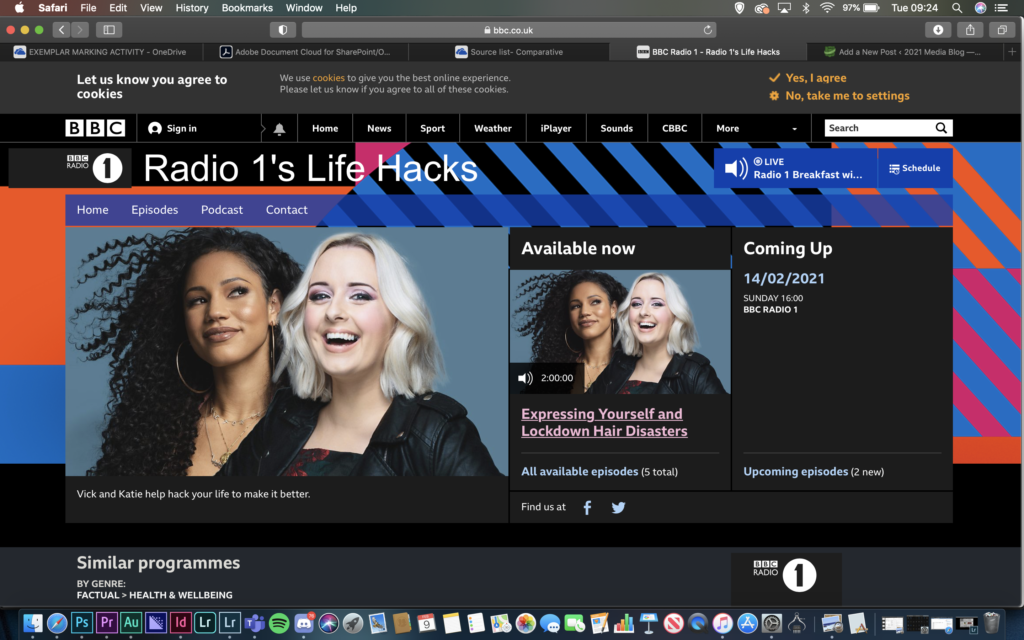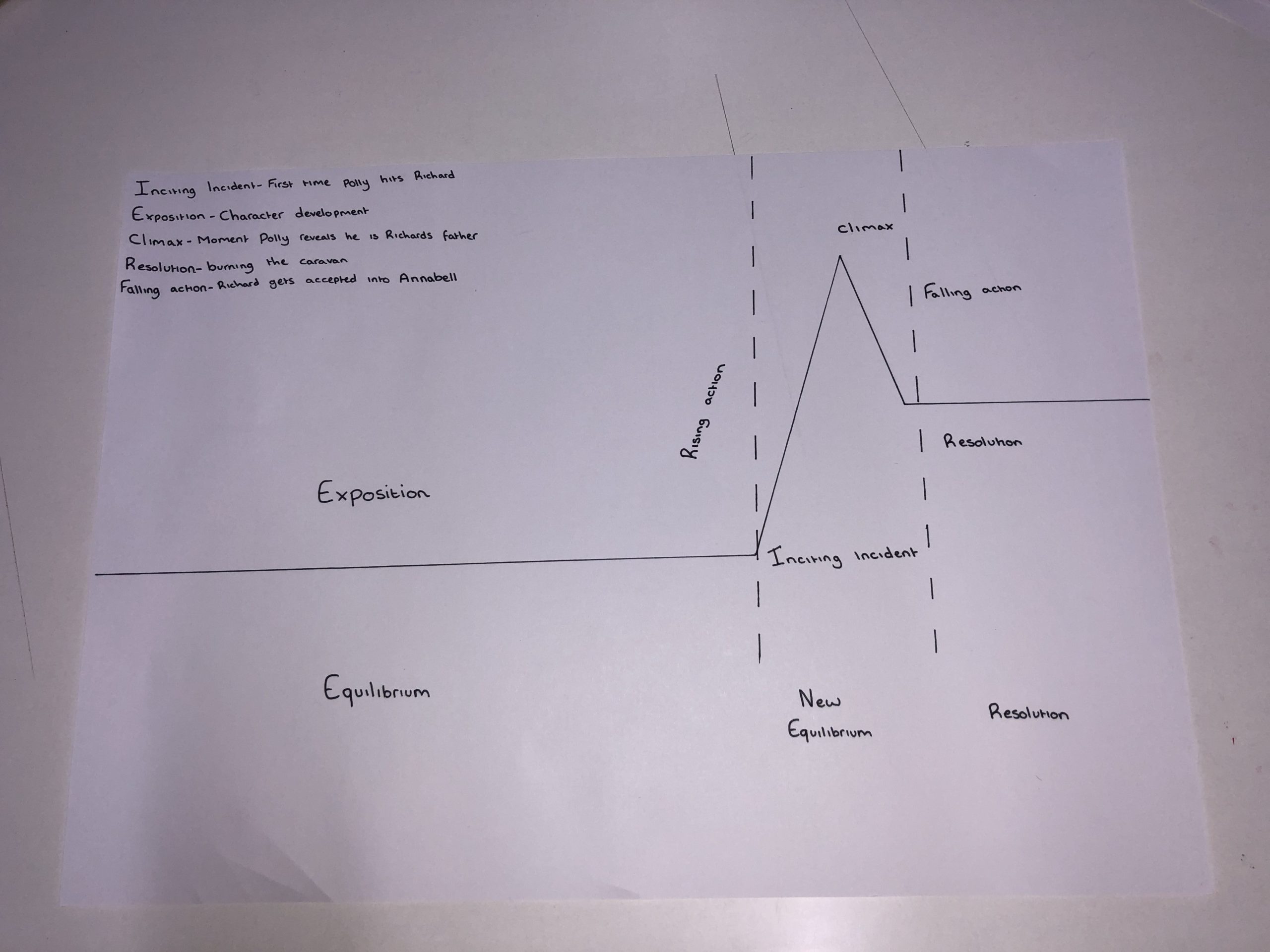
transitional media product– reflects changes in the contemporary media landscape (it is the replacement for a previous, similar programme, The Surgery

traditional radio programme with a regular, scheduled broadcast time (Sunday 6pm 14/02/21)
available online after broadcast for streaming and downloading.
opportunities for audience interaction (Audiences can take part in their projects as it is simple to follow along with common equipment)
Media Industries
Life Hacks is a Radio 1 product and therefore has a public service status as part of the BBC. (Tax Payer funded)
Identification of funding for Radio 1 through the license fee, concept of a hypothecated tax. (The hypothecation of a tax is the dedication of the revenue from a specific tax for a particular expenditure purpose. This approach differs from the classical method according to which all government spending is done from a consolidated fund. ) Video
Issues around the role of a public service broadcaster – how does Life Hacks reflect the need to represent the nation. Arguments over the need for addressing a youth audience
already catered for commercially. (Why should programmes be made for a demographic that already has enough media content already by the private sector such as youtube and TikTok).
The influence of new technology on media industries – Life Hacks as multi – platform media product.
Media Audiences
Life Hacks is reflective of the way the industry targets niche audiences and provides an opportunity to consider industry regulation and the availability of new technology shapes audience targeting and response.
• What techniques does the broadcast use to target a youth audience? Using online media instead of printed media so it is more accessible to the youth as they use online media much more.
• Consider the way that external factors – such as demographics and psychographics – are likely to also affect audience response and produce differing interpretations
• Consider the opportunities for audience interaction and self-representation viewers can follow along and make the same life hack as the people in the media creating a sense of gratification and satisfaction from completing the life hack
• cultivation theory including Gerbner
• reception theory including Hall
Social and cultural contexts
Life Hacks reflects an acceptance of diversity and a degree of openness in contemporary culture around personal, social and identity issues.






